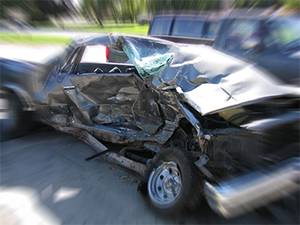 When you have been injured due to another person’s negligence, you may incur large medical bills, loss of work and lost income. You may have to endure extended periods of pain and suffering. The good news is that Oklahoma law gives you the right to hold the responsible party liable for your injuries and losses. This however requires that your case meet certain criteria. This article explains how you can recognize whether you have a personal injury case in Muskogee, Oklahoma.
When you have been injured due to another person’s negligence, you may incur large medical bills, loss of work and lost income. You may have to endure extended periods of pain and suffering. The good news is that Oklahoma law gives you the right to hold the responsible party liable for your injuries and losses. This however requires that your case meet certain criteria. This article explains how you can recognize whether you have a personal injury case in Muskogee, Oklahoma.
Generally, when you are injured due to the negligence of another, you can seek compensation for your injuries from the party at fault. In order to be successful in our personal injury claim, you must be able to show that the defendant acted negligently, and that his or her negligent actions were the cause of you injuries. Even in cases where you are partially responsible for your injuries, you may still seek partial compensation for from the other party at fault. Oklahoma personal injury law follows the theory of Modified Comparative Fault 50 Percent Bar, which allows plaintiffs who are partially at fault to be awarded proportionate compensation as long as they are less than 50 percent at fault for the injuries they have sustained.
Personal injury law covers a wide spectrum of injuries that can result from a variety of different circumstances. The most common types of personal injury cases involve:
- Auto accidents;
- Slip and falls accidents (also known as premises liability);
- Product liability;
- Medical malpractice;
- Truck wrecks; and
- Dog bites
Each of these categories may differ in the context and type of injury you might suffer, but in each case, the defendant must be held liable for your injuries if compensation is to be awarded.
Three Kinds of Liability in Oklahoma Injury Law
Liability is the legal term for fault and in general, fault can be determined in three different ways: due to negligence, strict liability or intention.
Negligence exists if:
1. The defendant had a legal duty (responsibility) to behave in certain manner towards you; and
2. The defendant breached this duty to you; and
3. You suffered an injury as result of the defendant’s breach; and
4. The defendant’s breach of duty was the proximate (most direct) cause of your injuries.
Strict liability exists in circumstance where negligence need not be proven for the responsible party to be held liable. This is often imposed on activities that are particularly dangerous in nature and have a high probability of causing serious injuries, such as in the transportation of explosives or other volatile material. Strict liability is also applies to most product liability cases, where the manufacturer is strictly liable for the safety of its products. In order for the manufacturer to be held liable for injuries you sustain while using their product, you need only prove that the product was defective.
Intentional fault is evident when someone intentional does harm to another such as in cases of libel, slander or assault and battery. Intention is very difficult to prove and usually comes down to a jury or the court determining if the defendant knew that his or her actions would cause you harm.
Summary
Your ability to be compensated for injuries you suffer due to the negligence of another depends on a number of different factors, including the circumstances leading to your injury, the type of injury you have and how much you are personally at fault. Most importantly, there must be evidence that the person responsible was negligent in his or her duty to you and thus liable for damages. For a more detailed examination of your personal injury case you should consult with an experienced personal injury attorney who can help you determine whether or not you have a personal injury case in Muskogee, Oklahoma.
Low-cost Consultation: Muskogee Personal Injury Lawyer
Contact the Muskogee lawyers at the Wirth Law Office – Muskogee for a initial consultation today with a Muskogee personal injury attorney at (918) 913-0725 or call toll-free at (888) 947-8452. If you prefer to contact us by email, use the form at the top of this page.








